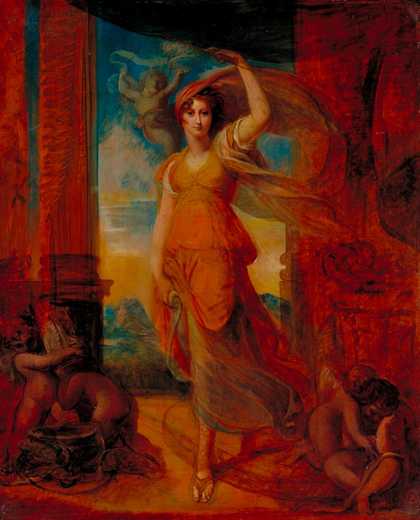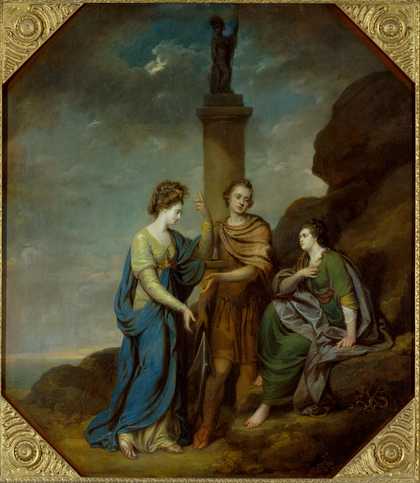Artist biography
Cosway was a diminuitive, flamboyant figure with a reputation for arrogance and womanising. He was often the subject of caricature, but his self-confidence and wit were such that he was able to deflect the derision he received from his artistic peers. A description of an Academicians' meeting in the early 1770s says that Cosway 'attended in all the gay costume of the drawing-room, with pink heels to his shoes, &c., but the room was so full he could not find a place. "What", said Frank Hayman, "can nobody make room for the little monkey?"'(George C. Williamson, Richard Cosway R.A., London 1897, p.31, revised edition 1905, p.38).
In 1781 he married the Anglo-Florentine artist Maria Hadfield (1759-1838). They lived first at 4 Berkeley Street and then at Schomberg House in Pall Mall, where they entertained lavishly and became the epitome of the smart London set. Their high social profile and self-promotion led to targeting by satirists. From 1785 Cosway often signed his works Primarius Pictor Serenissimi Walliae Principis ('Principal painter of his most serene Prince of Wales'), and frequented royal circles. He produced several notable life-sized portraits of the Courtenay family at Powderham Castle, including William, 3rd Viscount Courtenay (1791, Coll. Lord Courtenay). In addition, Cosway was an important collector of old master paintings, drawings and prints, sculpture and objets d'art. He died in London.
Further reading:
Stephen Lloyd, Richard & Maria Cosway: Regency Artists of Taste and Fashion, exhibition catalogue, Scottish
National Portrait Gallery, Edinburgh 1995
John Murdoch, Jim Murrell, Patrick J. Noon and Roy Strong, The English Miniature, New Haven and London 1981, pp.181-8
Graham Reynolds, English Portrait Miniatures, Cambridge, revised
edition 1988, pp.124-42
Terry Riggs
October 1997
Wikipedia entry
Richard Cosway (5 November 1742 – 4 July 1821) was a leading English portrait painter of the Georgian and Regency era, noted for his miniatures. He was a contemporary of John Smart, George Engleheart, William Wood, and Richard Crosse. He befriended fellow Freemason and Swedenborgians William Blake and Chevalier d'Éon. His wife was the Italian-born painter Maria Cosway, a close friend of Thomas Jefferson.
This biography is from Wikipedia under an Attribution-ShareAlike Creative Commons License. Spotted a problem? Let us know.
Read full Wikipedia entry


